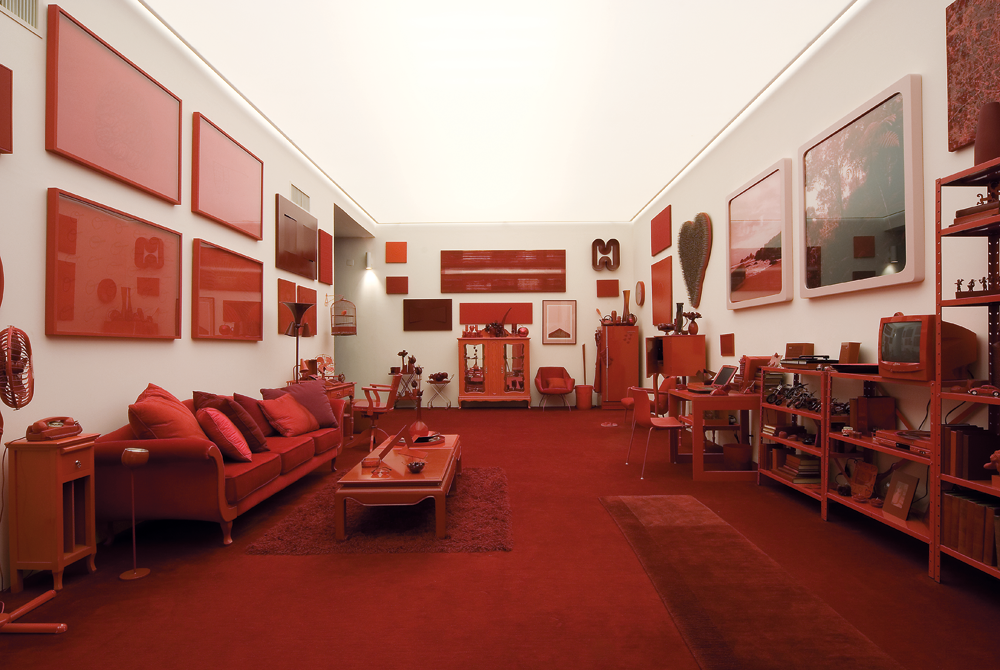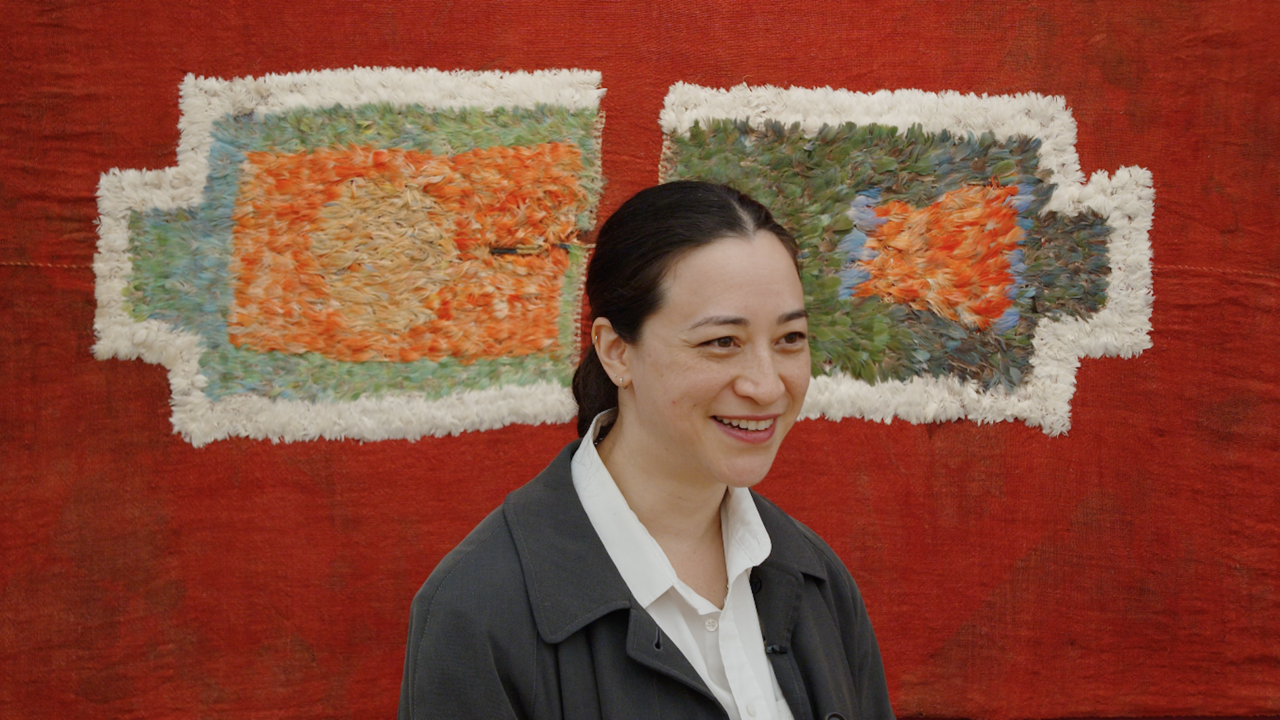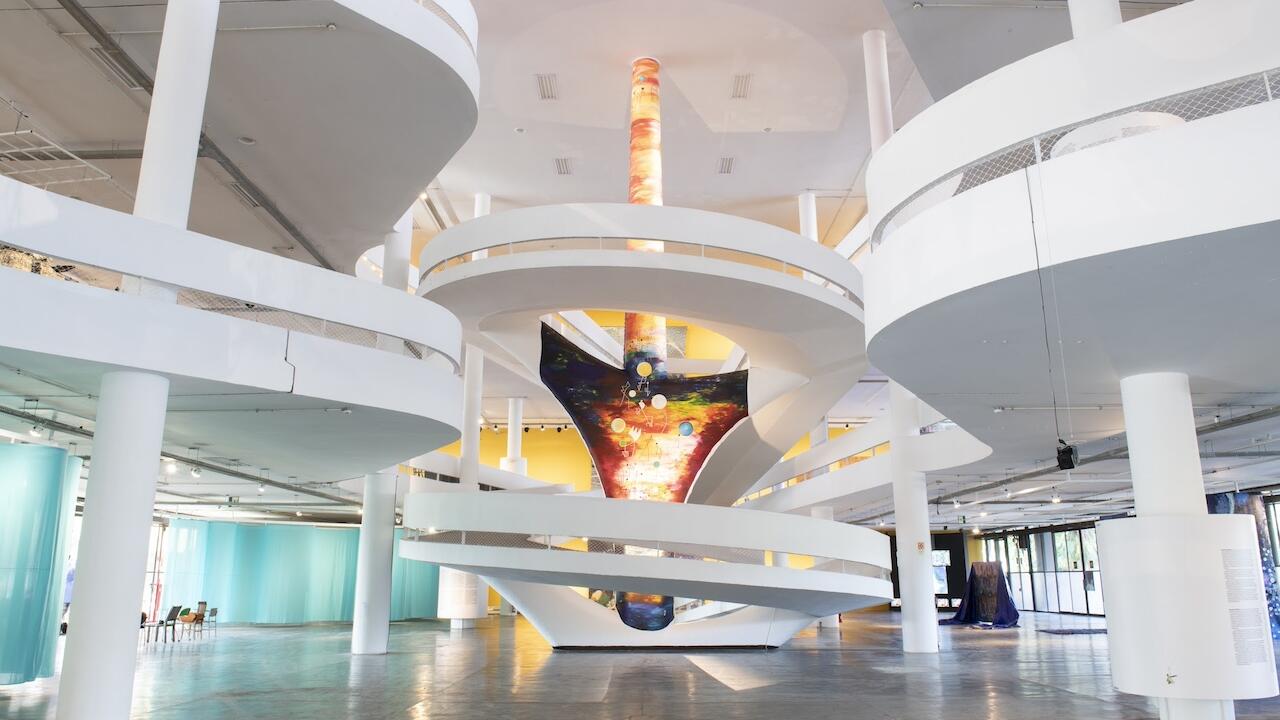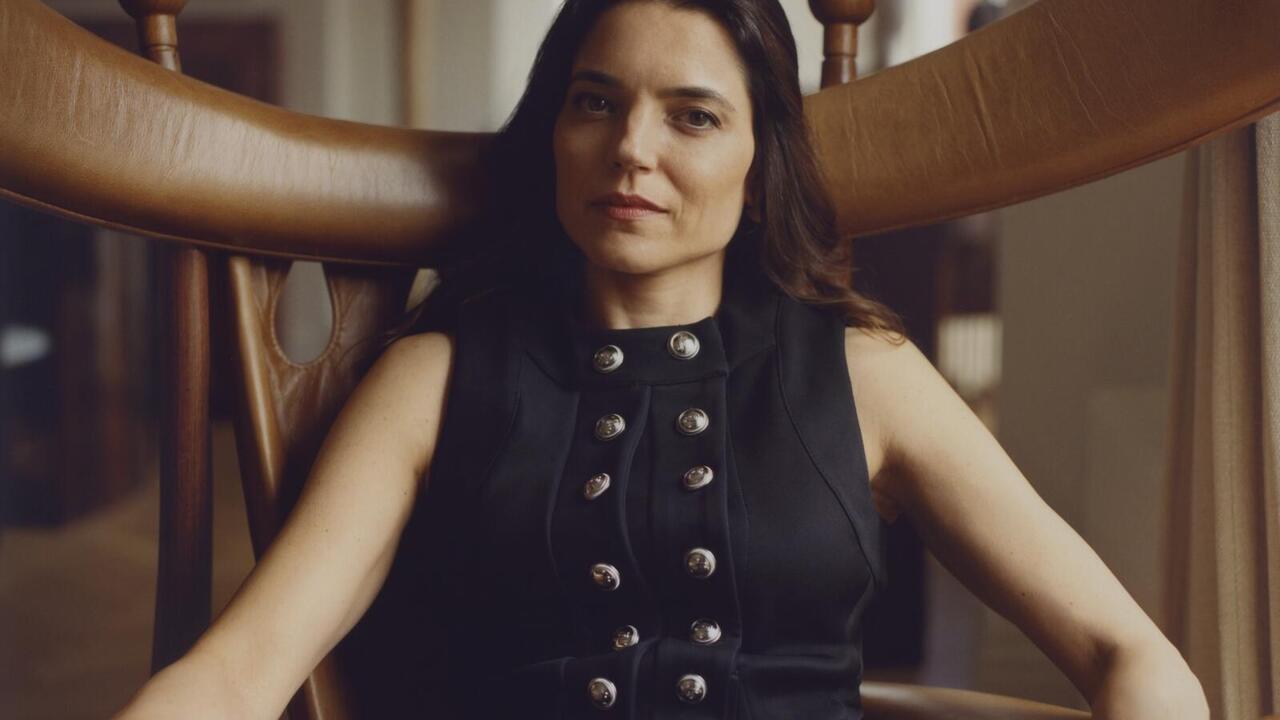Corners and Crossroads
Since the 1960s Brazilian artist Cildo Meireles has been searching for ‘some kind of communion’ with the public
Since the 1960s Brazilian artist Cildo Meireles has been searching for ‘some kind of communion’ with the public

‘My work always searches for some kind of communion with this indefinable broad entity called the public.’1 Cildo Meireles’s simple assertion suggests one of the many possible approaches that may to be taken towards interpreting his work. Its interaction with the viewer, visitor or participant has been a constant field of thought and experiment for the Brazilian artist, who turns 60 this year. At once it doesn’t seem so simple! This ‘communion’ that one may trace in Meireles’ work from its beginnings in the 1960s through to today raises some very fine distinctions, as always laced with a revelatory sense of paradox. Some works may be addressed to a fairly small and specialized audience: for example, O Sermão da Montanba: Fiat Lux (The Sermon on the Mount: Let there be Light, 1979), which basically engineers a devastating take on a familiar ritual of the art world – the private view – in order to raise questions concerning the efficacy of the work of art, and, as a consequence, about the notion of potential in society generally. People are prepared for certain familiarities, which Meireles then destabilizes (of course, Fiat Lux also has an afterlife in the effect that photographs and reminiscences of this 24-hour event may have). Other works, such as Inserções em Circuitos Ideologicos (Insertions into Ideological Circuits, 1970), address a public unprepared and potentially so large that its limits are unknown. Meireles pays equal attention to both realities.
Further strategies in Meireles’ work enable one to consider this ‘entity called the public’ according to other registers. Some of his largest installations, for example Desvio para o Vermelho (Red Shift, 1967–84), are best experienced by a single person who can then immerse themselves without distraction in this alternate world. Some of the smallest, for example the Coca-Cola bottles or the bank notes of Inserções…, can generate an ever-growing audience by virtue of their circulation through society.
Each object is therefore unique in material, appearance and scale. Some are generated within the viewing conditions of the museum and others within diverse ‘extra-museum’ situations. In both contexts material and thought, the sensory and the intellectual, are seen to generate each other and become inseparable – and the range over which these categories manifest themselves is very wide. The memorable exhibition Meireles held at the Pinacoteca do Estado de São Paulo in 2006 demonstrated this with a rare poetry. Three large installations were assembled and were awe-inspiring in their physical presence. Two of them worked by an aesthetic of accumulation: Marulho (Murmur of the Sea, 1991–7), by thousands of blue-printed open books lying on the floor, re-creating the sea, and the innumerable overlapping recordings of people murmuring ‘water’ in many languages; Babel (2001) by a tower made up of hundreds of radios packed together, tuned to dozens of different stations. The third, Cruzeiro do Sul (Southern Cross, 1969–70), worked by a process of paring down: one tiny oak/pine cube (9x9x9 mm) was isolated on an empty floor to create space by condensation rather than occupation. In between these great constructions (great, even if the material object was minute) three sheets of paper were attached to the wall, each bearing a short, typewritten text (Studies, 1969). The third, III Study for Space-Time, read in part: ‘Go without drinking water for 12 hours and then drink half a litre from a small silver tumbler, very slowly.’ The words, so sensuously precise, evoke an action in the imagination and are strangely liberating for the very fact of being immaterial.
A work by Meireles often starts in a commonplace, usually domestic object, or a childhood memory, which becomes transmuted into a perceptual, philosophical, even a cosmological speculation, without, however, losing its grit, its roots in social reality – a reality often harsh but marked by human resilience and inventiveness.
Meireles’ exhibition at Tate Modern (which opens on 14 October) is a museum experience by definition, revealed to people who have chosen to attend and have paid for admission, so it seems appropriate here to consider recent works which have been realized outside the museum, and have been open to another incarnation of the public: the passer-by. True, they have been contained within the cultural frame of a biennial or a Documenta – but the hypothetical passer-by would not necessarily be aware of this.
Visitors to Documenta 11 in Kassel in the summer of 2002 would have been pleased to come across one of a fleet of mobile ice-cream vendors and quenched their thirst with what turned out to be frozen water. As the consumers licked the ice, the words ‘Disappeared Element’ were revealed on the stick. Their surprise may have led them to reflect on the looming global crisis of water shortage, coupled with a subtle awareness of the crucial role of time in the process. This disguise of the work as a normal feature of city life was not achieved without artifice. With the growing industrialization of food the home-made is increasingly restricted for public consumption within the EU. Thus, despite its modern design/insignia, hygienic look and air of mass production, the artist’s ice-cream fleet and all its components – moulds, sticks, wrappers, carts etc. – had to be specially made in Brazil for the occasion, and permission obtained to ‘show’ it as an art work (profits from sales paid the vendors, while the surplus paid for the production of the ice-lollies).2 This ironic reversal threw into a new light the original experience in Brazil that inspired Meireles’ work.
Cildo Mereiles In 1974 I stayed at my grandmother Otília’s house in Campinas (Goiás). I remember the bus terminal was about 500 metres from her house. We had just finished lunch, and I was on my way to the terminal, in the middle of the afternoon, when, from a distance, I saw several ice-cream vending carts. Home-made ice-lollies were common, and their prices were written on a sign. At first sight I found that odd. One beside the other, several boys were selling the same thing. It made sense, though. They’re children, so it’s normal for them to be at a bus terminal, playing at parking just like the buses … children’s games. So I kept walking. I thought: ‘At least I’ll have dessert.’ When I got closer, I noticed something strange – there were three prices. I’d never seen that around there. They were priced $1.50, $1.00 and 50 centavos. I went up to one of the boys and asked: ‘Which one is most expensive? Creme?’ The boy replied, ‘Creme’. That one was made with milk. The $1.00 flavour was made with fruit. Fine. ‘What about the 50 centavo one?’ I asked. The boy said: ‘We make these just with water.’ This event was remarkable.
Meireles’ relationship to his public raises another interesting problem. People are drawn to a particular object or scenario/installation in all its uniqueness and autonomy. The artist has described this as the ‘seduction’ that he believes an art work must achieve. But since no one work, or group of works, resembles another and there is no stylistic continuity or ‘trade mark’, a person has to know his work really well overall to begin to trace thematic connections and preoccupations. These undoubtedly exist and are a mixture of the philosophical, mathematical, ethical, political and poetic registers. The ice-lollies of Elemento desaparecendo/Elemento desaparecido (IMMINENT PAST) (Disappearing Element/Disappeared Element) have a link with the Coca-Cola bottles and banknotes of Inserções em Circuitos Ideologicos. The work Meireles made for the Istanbul Biennial in 2003 throws us back to the formal structures and existential concerns of some of his earliest works. For Homeless Home (2003) the original idea was to rent ground-floor dwellings of buildings on the corners of a crossroads in the city. The right conditions proved very difficult to find, and in the end a construction company built four corner rooms at the crossing of Istiklal Caddesi, Yenicarsi Caddesi and Hamalbasi Caddesi:
CM One was a living-room furnished in the usual way with sofas, chairs, and books and prints on the subject of houses. Another room on another corner was a kitchen, another was a bedroom and the fourth was a bathroom with toilet, basin, shower etc. The whole thing was open to the public 24 hours. Each room had two doors, one on each street, so whenever you wanted to go from, say, the living-room to the kitchen, you had to cross the street, through the traffic. Construction could only be done at night because there were big cranes, lorries etc. I never actually saw it working. Two weeks after the opening there was a huge bomb explosion in a synagogue nearby – 250 people were killed. The work was closed because people were very worried a bomb might be hidden under the bed … The work performs a separation, but it’s still a single thing. It’s nothing spectacular, but there is always a mystery that inhabits the domestic reality. Maybe right behind that tree over there is a universe. Between one and two a third number can be found, and between these another, getting smaller and smaller, in the middle of the middle of the middle …
Meireles has described ‘corners’ and ‘crossroads’ as a dualism. His early experiments with geometric, Euclidian space, Espaços Virtuais: Cantos (Virtual Spaces: Corners, 1967–8), were presented as full-scale mock-ups of the corners of domestic rooms, and he characterizes them as ‘places where there is no action, places of total refuge’.3 Crossroads, on the other hand, ‘are places for action par excellence’.4 The two were combined in Homeless Home in a walk-in modification of the urban routine. The notion of a ‘place of total refuge’ can take us back again to an early pre-occupation of Meireles. This concerned the photograph of a catatonic man. His image appears in several works, notably on one side of the Zero Cruzeiro, the spoof Brazilian banknotes the artist produced in 1978, where this man’s image replaces the customary illustrious figure from national history. To all intents and purposes he was someone excluded from society. If we penetrate behind the simulacrum and the satire of the banknote, behind the ‘cash nexus’ symbolized by the scrap of paper and here reduced to zero, we face harsh truths about social reality:
CM There used to be an old mental hospital in Trindade (Goiás), and I went to speak to its director, who was a nun. I went there to interview her and ended up taking a series of photographs. The nun told me some terrible stories. One was about a girl who was born severely deformed. After the birth her mother got a small axe to kill her, only she did not succeed: she cut out a piece of the brain, but the girl managed to survive. There was also a beautiful little curly-haired, angelic-looking blonde girl who was completely catatonic. Her mother had thrown her into an outhouse: a wooden structure with a fosse. People just keep defecating there until it is filled up with shit. The girl’s mother threw her into that place as soon as she was born. She was physically perfect but autistic. There were many such stories. When I came to look at the photographs, many of them contained a distant figure that I hadn’t previously noticed. I returned to the hospital and asked the nun: ‘What about this person here? You didn’t tell me anything about this one.’ The nun replied: ‘This gentleman arrived 17 years ago. He went out onto that patio, stood in the corner and there he remained. Ever since then, he goes there as soon as he wakes up and spends the whole day with his head like that.’ He suffered from terrible guilt. He just stared endlessly into that corner.
The crossroads, the ‘place for action’, could also symbolize how different modes or directions of thinking criss-cross in Meireles’ work itself. In Homeless Home two kinds of space interpenetrate one another: the refuge and the street, the inside and the outside, the private and the public. Thirty-three years later Meireles came to recast these opposed categories in a completely different metaphor, a linguistic one. The idea of (Entre parêntesis) (In Parenthesis, 2007) is to construct an immense pair of brackets, outdoors, in any city, out of materials that are commonplace locally, creating a space that people are invited to enter (the Portuguese title carries the double meaning of ‘between’ and ‘enter’). (Entre parêntesis) was first realized in Colombia as part of the Biennial of Medellín in 2007, made of woven plastic tubing on a steel frame (a familiar material used for making cheap, mass-produced chairs). At each of the two entrances/exists was a sign: ‘Enter into the space and look attentively and calmly at the person in front of you, knowing that this may never happen again.’
Meireles had no idea how the work would be received.
CM It’s a thing you don’t normally do when walking in the city. People approached first because it’s a physical thing, a new thing on the block. The situation inside … that’s hard to talk about, what people made of it. It’s rather like, if you give a class and you start with a hundred students, in the end you have the handful, even just one or two, who are really interested. The work was necessarily temporary, intended to stay three or four months – otherwise it would very likely be turned into a toilet. This sends us back to our own condition, which is temporary – life is temporary, values are temporary.
This experience led him to think even more generally.
CM I’m more and more convinced that the only thing that exists is time. This (Entre Parêntesis) happens in your time, your lifetime. Sometimes I think that maybe everything is only residual time. What we call space, material … in fact it’s a kind of accumulation of time, even the earth. One thing fights the limits which time imposes and maybe it’s life. If you think of the beginning of the planet, earth was just a grain – the minimum materiality. There is always some residue. Maybe the earth, as the size we know it, is only the accumulation of this residue. Life is the only thing that can transform this equation by adding materiality. God may be the longest duration …
Meireles tends to resist questions about national or cultural identity, stepping elegantly aside. ‘Each time I started to think about what being a Brazilian meant, I always ran into the impossibility of not being Brazilian’.5 Nevertheless the structure of (Entre Parêntesis) – albeit expressed in minimal, almost abstract terms – posits a special time inside habitual, normal or official time: very much like the role of Carnival time within the many societies that have evolved this festivity, among them Brazil. Does Meireles give this importance?
CM Brazil had to invent its own history in art. We were not like the Spanish colonies in Latin America. When I think of great painting, I always think of El Greco, Velázquez, Goya and even Modernism, Picasso, Miró. Portugal never had that. Literature yes, but not painting. As we had to invent a culture, fortunately the body spoke. You could not avoid the presence and the voice of the body in the work. Of course, in the work of Lygia Clark and Hélio Oiticica this was brought out and clarified, but it was already there. You have to deal with the body on a daily basis. With his Parangolé, Hélio removed clothes from the dressing function and gave them autonomy. You have to wear it but it’s not clothes any more. Clothes are the closest thing to our body – the most intimate contact that materials can have with a person. Parangolé is a continuous passage between subject and object, as if the subject became the object, and the object became part of the subject. Most of the installations I’ve done have this aim: to dissolve one thing in the other, to create a kind of integral unity of subject and object. Of course, the culture of Carnival has played a role as well. The main thing about Carnival – and it’s the same with the Parangolé – is that the clothes are not only to be seen by someone outside. You wouldn’t go to Carnival to see, to watch. You are not only the subject, you are also the object of Carnival. Today Carnival in Brazil has become a spectacle, a Broadway show. Now they judge, give marks for clothes, for choreography. Formerly, people were the Carnival: this only happens when you are involved. It was amazing the creativity of people, this spontaneous thing. It was something very individual. You had a year to think what you were going to do, save money, buy this or that. Of course, there were always clichés: a pirate, a pierrot, Batman. Sometimes you were a bus, or you’d invent a hat that is two metres high – totally unexpected things, always some fantasy. Now it has become institutionalized, big business, most tickets go to tourist agencies. But there is a kind of movement now to bring Carnival back to the streets …
We can return once again to the ‘communion’ of Meireles’ work with the public by considering the question of interpretation. Each of his objects or scenarios in its unique identity seems to produce a passion and/or an anxiety of explanation along with a great latitude of interpretation. Their meanings have simultaneously been pulled in many directions. Meireles cites the influence on his generation of Umberto Eco’s thesis of the ‘open work’, and on the whole welcomes multiple interpretations:
CM It’s curious how different these interpretations can be. When I did Desvio para o Vermelho at various showings the association of red with violence and blood came up, and political and ideological interpretations. For me the piece was much more linked with chromo-poetics, if I may call it that, more to do with poetry than with politics, more to do with perception, sensitization, than with a symbolic meaning.
Meireles isn’t comfortable with the way a ‘political’ reading seems to take precedence over others, notwithstanding that a ‘basic principle’ of his, enunciated in 1977, is to ‘try to establish a state of equality and justice’.6 This tendency to prioritize the political – which is surely grounded in the political awareness and acuity of Latin American Conceptual art when compared with western European and North American Conceptual work in the heyday of the movement – is both exemplified and problematized by many of the essays written for the publication for his coming show at Tate Modern:
CM I spent the 1990s trying to avoid [narrowly political readings]. Fontes (1992) is not political. Desvio para o Vermelho admits a political reading, but it’s about colour. Around Eureka/Blindhotland (1970–5) you can build up a political discussion, but the work itself is very neutral. Some works are political: Tiradentes: Totem-Monument to the Political Prisoner (1970), certainly, coming from a moment of extreme state repression. The works connected with money are political, but they refer much more to this gap between symbolic and real value. It would be political if it referred specifically to inflation. We do political work when we are compelled to react to events. In some way you become political when you don’t have a chance to be poetic. I think human beings would much prefer to be poetic. I think every human being would like to have peace, to enjoy life, to have good food, good sex, good wine, good friends and pleasure. Maybe this will never be possible … Maybe we have a need to know the truth.
And maybe this need requires bringing down to earth, to the mixing of the sublime and the absurd, value and worthlessness, or the ‘stars’ and the ‘gutter’ to borrow Oscar Wilde’s words.
CM My father used to tell a story – perhaps he made the whole thing up – of how he was traveling once in the back lands of Brazil and he came across a sort of tent with a queue of people outside it. There was a signboard on the tent: ‘Know the Truth: only 1 centavo.’ He joined the queue, paid and when he was inside a guy gave him a metal can with a coloured tissue paper stretched across the top. Each person would get one of these and, when they opened it and put their fingers in, they found there was shit inside!
1 ‘Gerardo Mosquera in Conversation with Cildo Meireles’, Cildo Meireles, Phaidon, London, 1999, p. 17
2 Cildo Meireles, exh. cat., Musée d’Art Moderne et Contemporain de Strasbourg, 2003, p.169
3 Nuria Enguita, ‘Places for Digression: An Interview with Cildo Meireles’, Cildo Meireles, IVAM Centre del Carme, Valencia, 2003, p.163
4 Ibid.
5 Ibid., p.166
6 Cildo Meireles, interview with Frederico Morais, O Globo [Rio de Janeiro], 13 March 1977
Unless otherwise footnoted, Cildo Meireles’ words are taken from two sources: a conversation the author had with the artist in London in May 2008 and unpublished extracts from an interview with Felipe Scovino, commissioned by Tate Publishing for the catalogue of Meireles’ forthcoming exhibition at Tate Modern and subsequent international venues, recorded in Rio de Janeiro, August–September 2007. Passages originally in Portuguese have been translated by Stephen Berg.






















